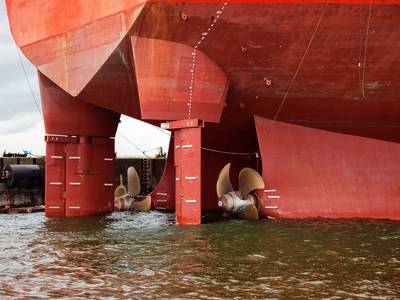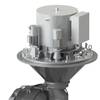Gard: Increase in Stern Tube Damage Concerning
The number of stern tube-related damage claims has increased considerably over the last few years, and this is causing marine insurer Gard some concern.
In the past, damage to a stern tube was often considered a relatively straightforward casualty by surveyors. The cause was often obvious – contact with a floating object such as ice, fishing nets or ropes, for example.
These causes still exist, but the significant increase in frequency over the past years, without any apparent explanation, raises concern, says Gard.
Over the last decade, the number of shaft / stern tube-related claims Gard has handled, either as claims’ lead or on follow accounts, exceeds 700. The increase does not simply reflect an increase in the number of vessels insured. Rather, the significant increase in claims seems to have followed the introduction of the revised Vessel General Permit (VGP) requirements in 2013 by the U.S. Environment Protection Agency (EPA).
These require all vessels over 79 feet trading in U.S. waters to use environmentally acceptable lubricants (EALs) in all oil-to-water interfaces.
According to a study performed in 2019 by DNV with the assistance of Scandinavian Insurers (Gard, Skuld, Swedish Club & Norwegian Hull Club) it was discovered that two key features of EALs make them different from the traditional mineral oils widely used before VGP requirements came into force:
Pressure / viscosity coefficient => under high load operations (i.e. hard turns at high speeds) the EALs operate with a lower safety margin of the minimum oil film between the tailshaft and the bearings
Viscosity index (EALs significantly higher than mineral oils) => EALs operate with lower viscosity under lower temperatures (i.e. mooring trials and cold start-up).
Another notable characteristic of the EALs is poor hydrolysis stability when interacting with sea water once bypassing the aft seals. When contaminated with sea water, lubricant decomposes, and carboxylic acid is generated which can damage the seals resulting in even greater sea water ingress, says Gard. In sum, it has been confirmed that the performance capacity of the traditional mineral oil – the strong lubricating oil film, consistency at the presence of water in the oil and excellent seal compatibility – cannot be matched by the EALs. This is why shipowners tend to go back to the “traditional” mineral oils combined with air-type seals, for both newbuildings and existing vessels.
Gard’s analysis of bulk carriers and container ships showed that up to 80% of the incidents investigated involved stern tube seal failure with EAL oil in use whilst the average age of the vessels was 12 years.
“Design fault” was also identified as a cause worthy of further exploration.











